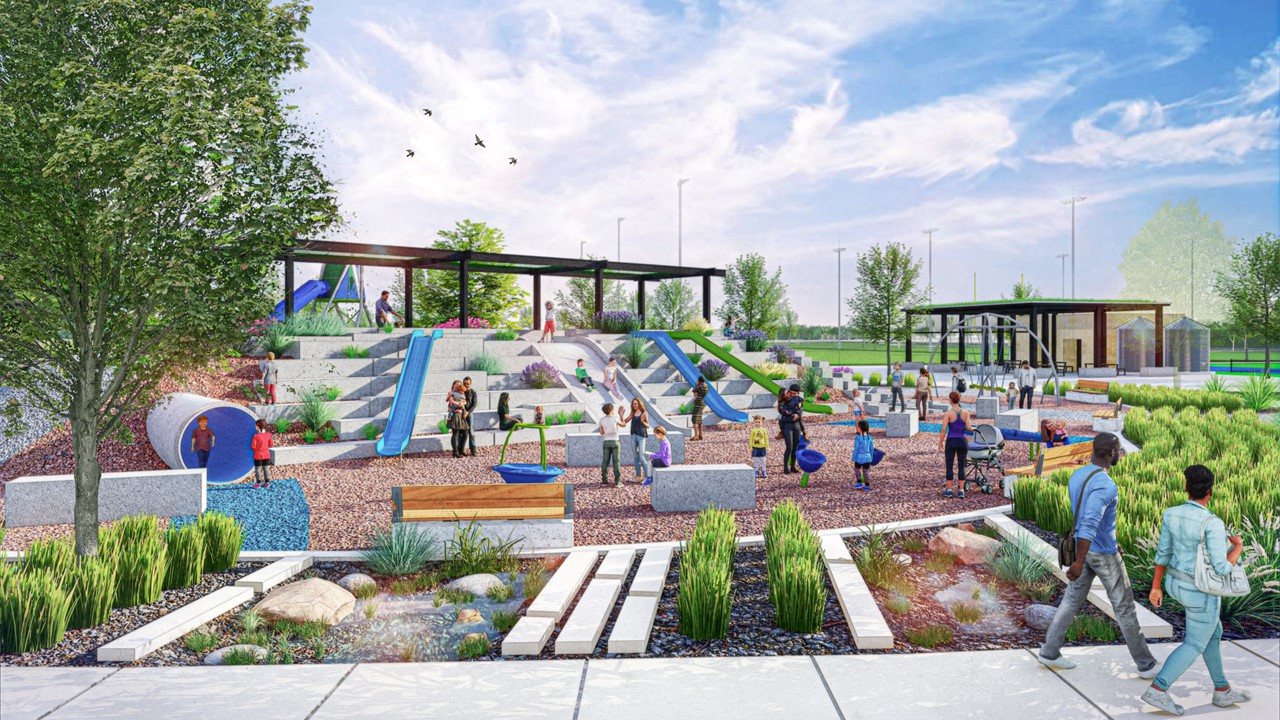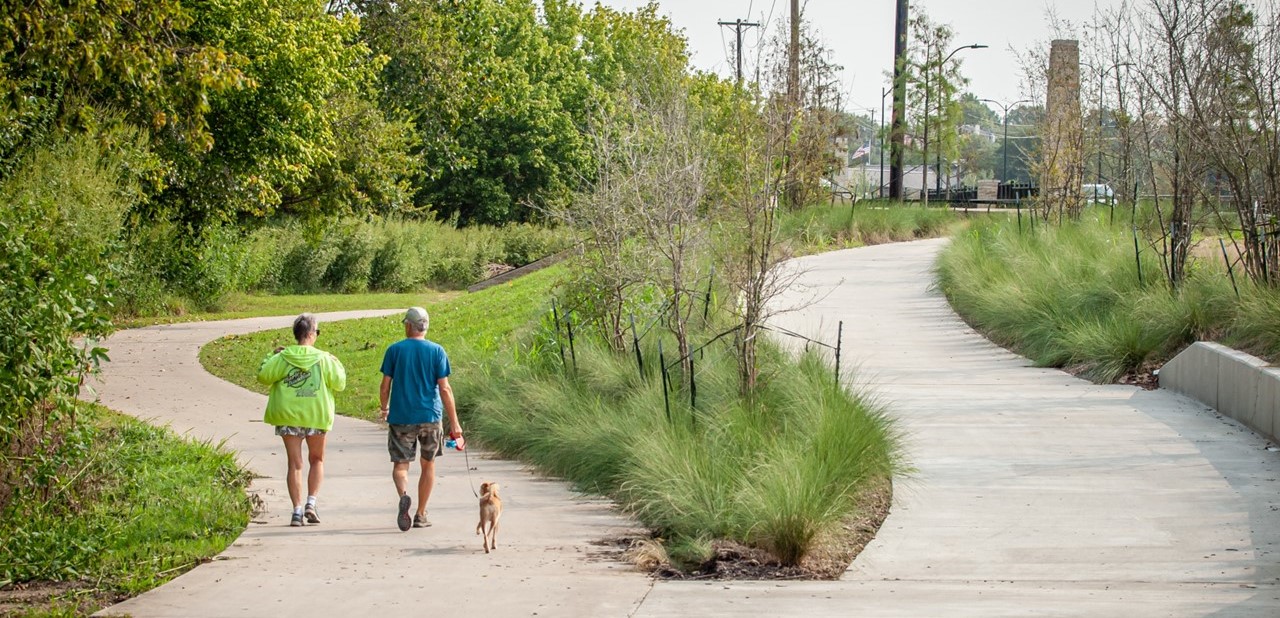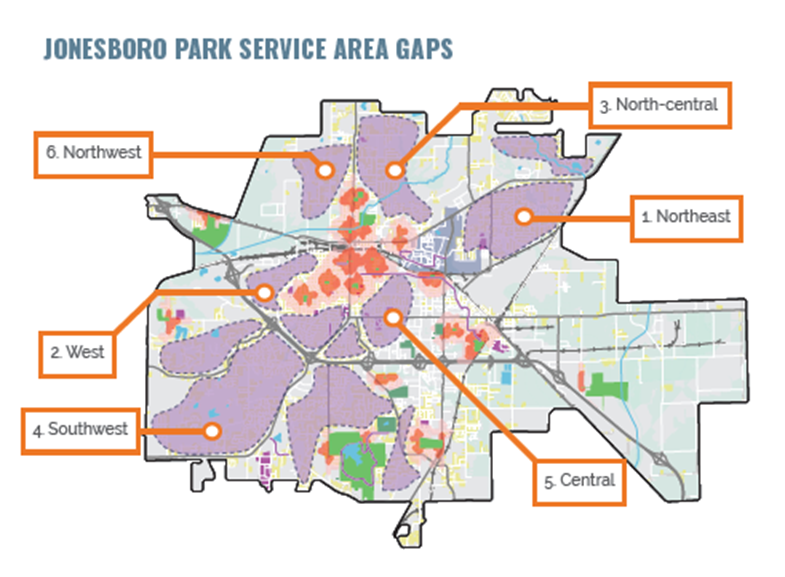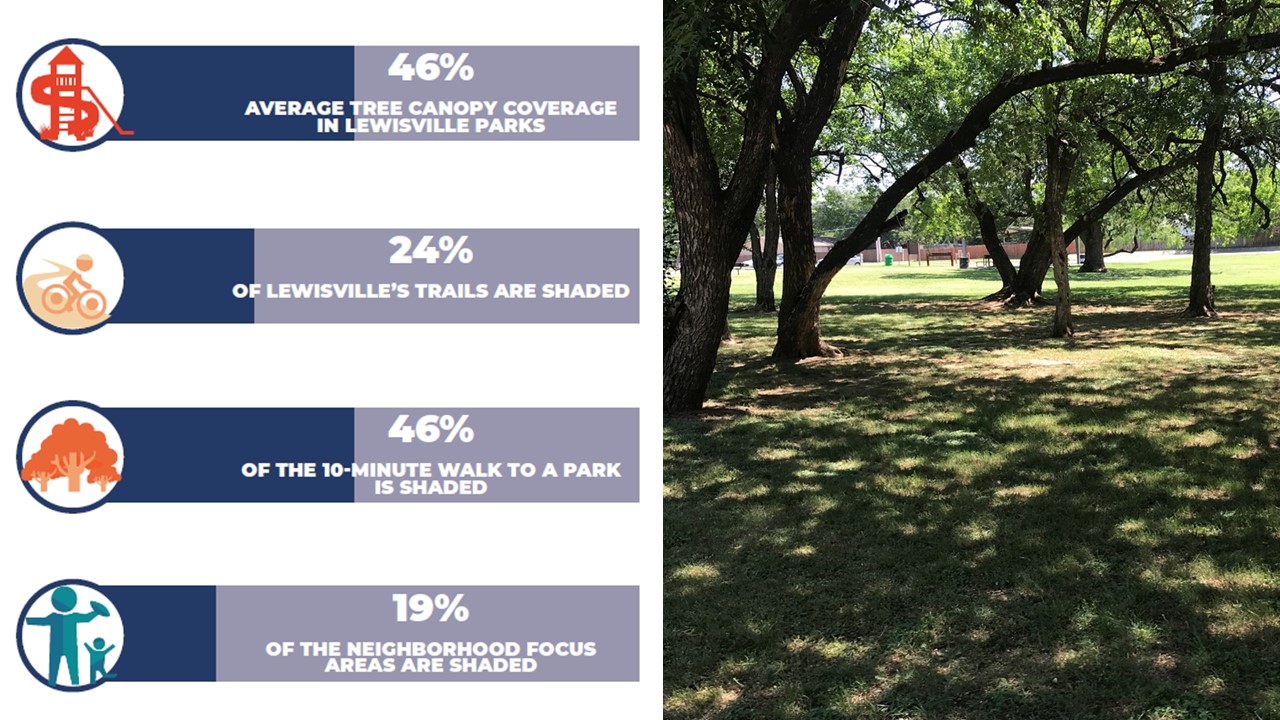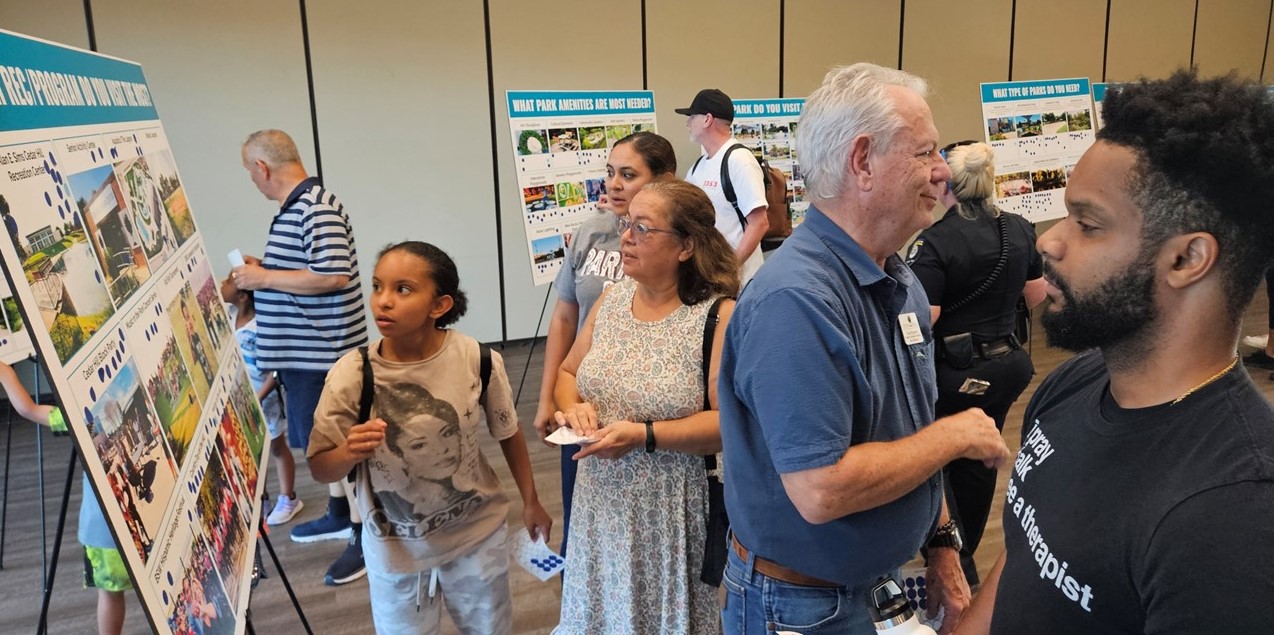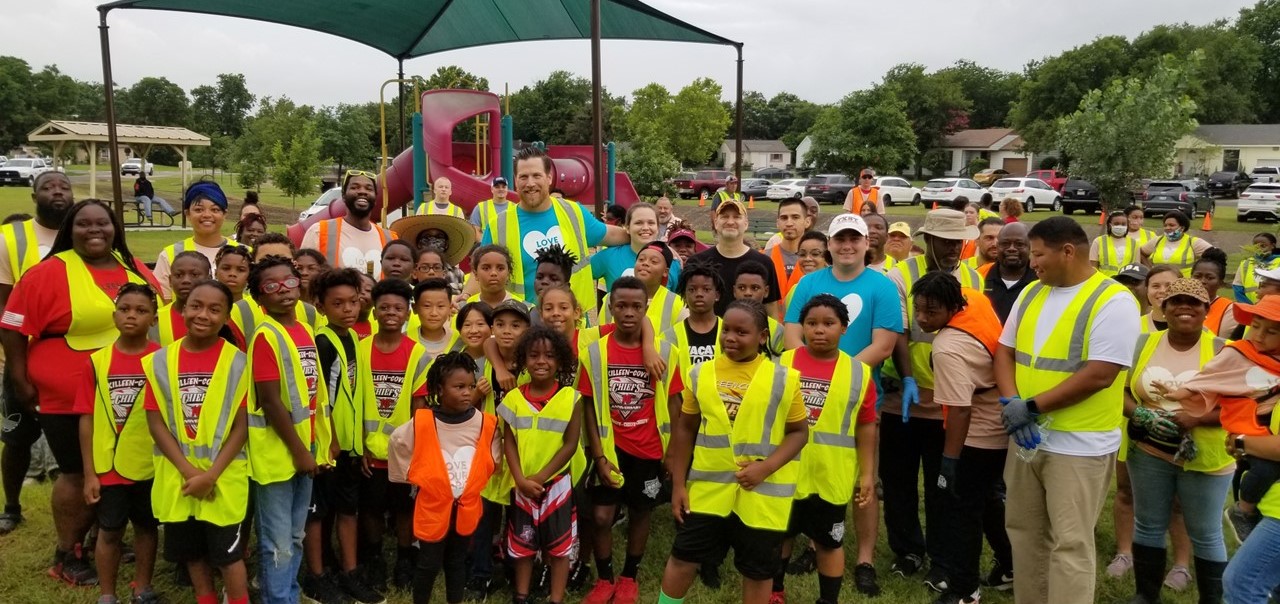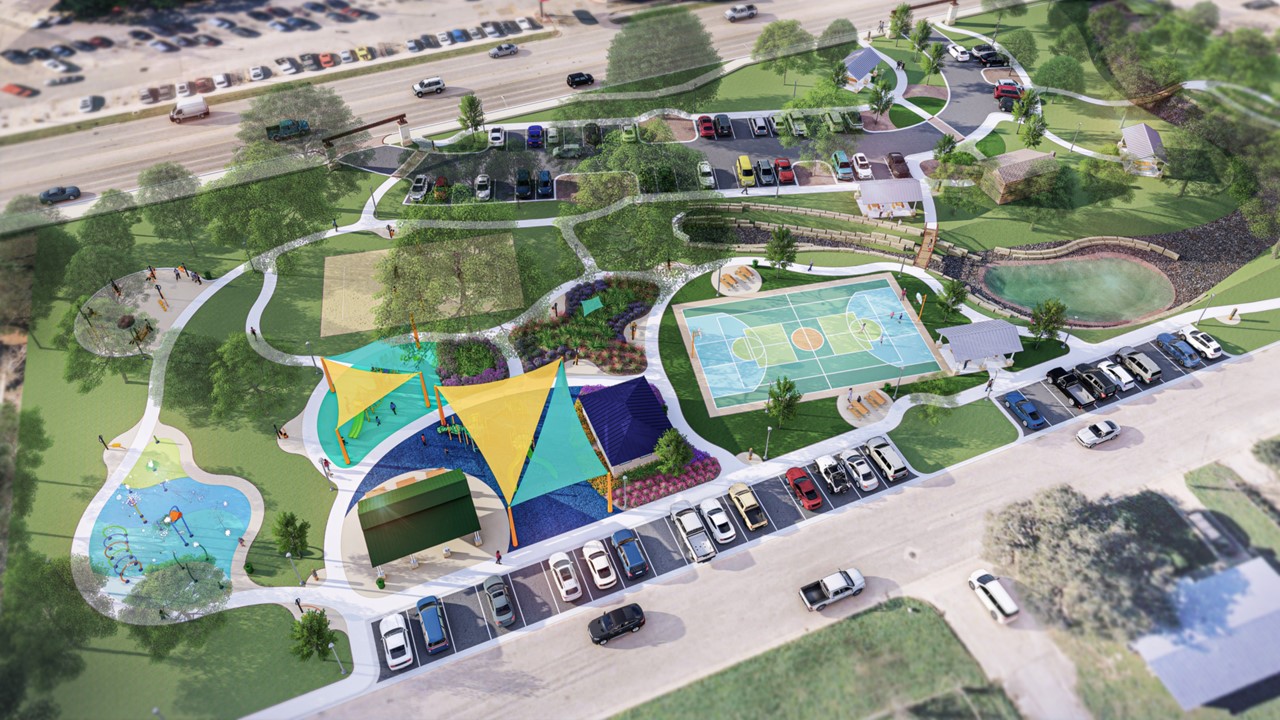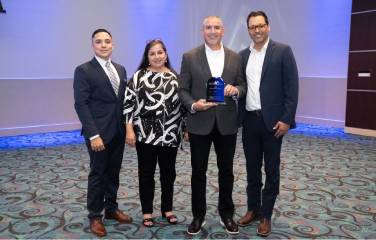Investing in Parks and Recreation Master Plans Brings Lasting Value to Communities
Investing in parks and recreation has proven to bring long-term value to communities that is just as important as other types of civic infrastructure (City of Austin Bolm District Park Master Plan).
What if your city’s next big infrastructure investment wasn’t brick and mortar, but green space?
Parks have always played a powerful role in shaping how a community feels, functions and grows, both economically and socially.
Municipal staff, elected officials and residents alike are discovering firsthand how thoughtfully planned parks and recreation systems guide smarter investment decisions and unlock resources while enhancing quality of life.
Parks Deserve a Seat at the Infrastructure Planning Table
When people think about municipal infrastructure, parks aren’t always the first thing that comes to mind. Yet, they are a crucial foundation for community health, sustainability and economic growth.
Just as access to water, quality schools and strong transportation networks are vital for a community, parks provide significant value to a community’s long-term desirability. Beyond its physical footprint, public parkland also functions as a “third space,” which are shared spaces where people gather, build relationships and experience belonging. In an increasingly digital and disconnected world, these public spaces quietly sustain the social fabric that traditional infrastructure cannot.
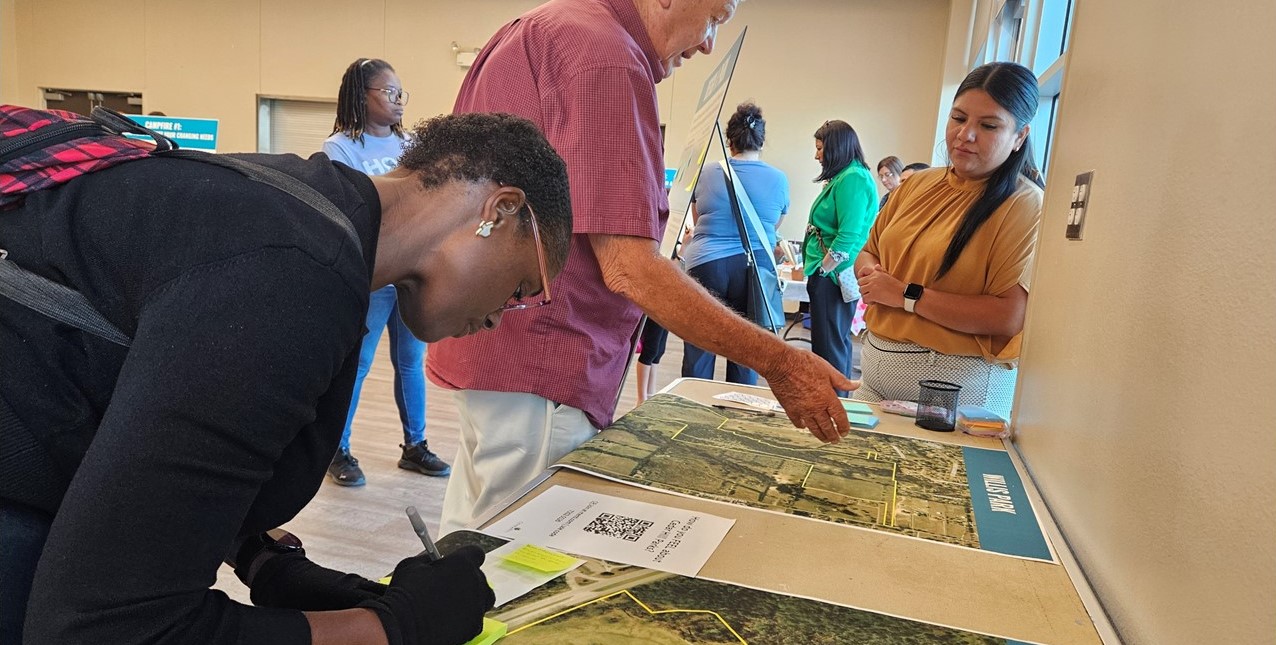
This “proximity principle” rings true, as communities that have convenient park access are naturally more desirable. In turn, this strengthens local tax revenues and supports broader community investment and economic growth.
When parks are treated as infrastructure, rather than optional amenities, they prove to be essential systems that require deliberate planning, just like roads, water or sewer networks. Communities must be intentional about how parks are planned and prioritized. Integrating parks into citywide planning initiatives aligns park development and the provision of associated recreational services with broader community goals.
Revealing the Value of Parks and Recreation Master Planning
A parks and recreation master plan provides a necessary framework to translate a community’s vision for public space into reality. It positions parks, recreation facilities, trails and open spaces as central elements of “quality places,” shaping how a city grows and how people connect with their surroundings.
Planning at the system level strengthens accessibility, supports equitable distribution of resources, and leverages the social, ecological and recreational benefits of parkland and recreation facilities across the entire community.
Despite the clear benefits of parks and recreation, community decision makers may still question the value of investing in parks and recreation master planning efforts. But leaning into it brings the opportunity to engage residents in shaping a cohesive and equitable parks system — one that serves the recreational preferences of the entire community.
What tangible value do parks and recreation master plans bring to a community?
-
-
- 1. Vision Alignment. Parks and recreation master plans provide a carefully planned road map with clear direction aligned with community preferences and projected growth. They help communities prioritize investments, coordinate across recreational service providers and respond to community needs with clarity and purpose — all tied to a planning process designed to build consensus among stakeholders.
- 2. Strategic Foresight. Evolving national recreation trends and demographic changes result in shifts to how residents and visitors wish to recreate. Parks and recreation master planning efforts provide the opportunity to understand public attitudes toward the type of recreational amenities that local governments provide, whether these amenities match today’s community preferences and how new investments should be prioritized accordingly.
- 3. Efficient Allocation of Resources. Parks and recreation master plans help demonstrate fiscal responsibility and show that decisions are rooted in community needs and input. This is something critically important across election cycles. Well-built master plans guide investments so tax dollars and staff time are used strategically and transparently.
-
Why is it important for both built out and growing communities to invest in a parks and recreation master plan?
In primarily built-out communities, the challenge is not increasing park acreage but improving access and enhancing existing spaces. For example, the City of Plano in Texas is roughly 97% developed; in the latest iteration of their master plan, an emphasis was placed on improving walkable access to parks and finding opportunities for green space within underserved areas.
A parks and recreation master plan in a developed community is also an opportunity to review demographic and cultural changes, to make sure the system’s amenity and program offerings are meeting the current population needs. A parks and recreation master plan helps prioritize reinvestments in aging facilities based on conditions, equity and patterns of use instead of just reactionary fixes.
In contrast, growing communities often struggle to keep pace with increasing demand for parkland. They risk missing opportunities for targeted acquisition based on where growth is anticipated. Parkland dedication ordinances can be effective tools, but such regulatory methods for parkland acquisition and development should be designed to support the community’s defined parks system growth priorities identified through a public planning process. To that end, a parks and recreation master plan helps communities identify where growth is projected, and where needs for additional public park access and common recreational amenities are anticipated.
Raising the Bar: Beyond the Traditional Parks and Recreation Master Plan
Quality parks and recreation master plans don’t just envision the future — they lay the groundwork for turning ideas into reality.
How can parks and recreation master plans make a true difference in communities, beyond solving inventory and service gaps?
Traditional plans, while offering helpful insights and benchmarks (such as parkland per capita), don’t always reveal how parks are improving quality of life. It’s also important to dig deeper, asking whether parks are contributing to a community’s mobility, health, enjoyment and resilience
Halff brings a unique depth and level of expertise when it comes to parks and recreation planning. Our team’s diversity of park experts, including planners, designers, former park directors, landscape architects and more, bring years of collective experience that is unmatched.
We work with communities of all sizes to accomplish their goals. From communities focused on basic upgrades to others pursuing world-class facilities, we tailor each plan to reflect each community’s goals and funding realities.
The following list highlights just a few of the processes and elements used to provide a parks and recreation master plan with greater depth in establishing recreational policy and investment priorities:
Conditions Assessments. A conditions assessment is a systematic evaluation of the physical state and functional performance of each park and recreation facility. Halff’s standardized park and facility conditions assessments can be customized for each community on a case-by-case basis, with distinct assessment processes that address key community priorities (e.g., ADA accessibility, safety, indoor recreation and aquatics).
Walkshed Assessments. Improving access to your parks system is just as important as determining the recreational experiences you offer within each park space. Many of Halff’s parks and recreation master plans include walkshed assessments that evaluate walking, biking and rolling routes and facilities outside park boundaries. They also identify projects that improve bicycle and pedestrian access to parks from surrounding residential areas.
Our walkshed assessments consider access points to the park and identify key service area gaps. This brings forth opportunities to improve walking and bicycling access to the park entry points.
Operations and Maintenance Assessments. Understanding staffing resources, budgets, revenues and workflow helps reveal efficiencies or deficiencies within the department. An operations and maintenance assessment evaluates how existing resources are allocated across the parks and recreation system, and whether current practices align with service expectations.
Health Assessments. Health assessments evaluate how a park system contributes to or could better support community health outcomes. This analysis considers park accessibility, active transportation connections, recreational programming and environmental quality. Using public health data (e.g., rates of chronic disease, obesity or air quality indices), the assessment identifies where improved park access or design can have the greatest health impact. The result is a data-driven link between park planning and community well-being.
Equity Mapping. Certain population groups, such as those without access to a car and those with disabilities, may have a harder time accessing parks and facilities. Halff has developed an index that considers socioeconomic, demographic and health factors to identify locations of potentially vulnerable populations. The resulting maps are used to inform where parks and facility access improvements would be the most impactful.
Tree Canopy Analyses. Understanding the composition and health of the urban forest can help a community identify priority areas for tree planting and habitat enhancement. This includes long-term canopy management strategies. Halff has integrated tree canopy studies into larger park and recreation master plan efforts in recognition that in many communities, a significant portion of the urban forest is found within parkland.
As part of the City of Lewisville Healthy Infrastructure Plan, a tree canopy analysis was conducted to determine areas of the City where tree canopy coverage could be improved, including along trails and walking routes to parks.
Park Activation Indexes. The results of many of the previously listed assessments are used to prepare and prioritize recommended park and recreational facility projects. Halff combines these park-by-park project packages to improve the cumulative “park activation” score of each park being evaluated in the master plan. Such projects are distinguished by three categories including:
-
-
- Activation and Social Interaction. Projects to add, replace or relocate recreational amenities offered within the park space.
- Safety and Comfort. Projects to enhance the condition of existing facilities, landscaped spaces, accessory amenities and safety features.
- Park Accessibility. Projects that improve internal park circulation and external park access.
-
Community input and buy-in are also foundational to the parks and recreation master plan process.
Public engagement session for the City of Cedar Hill in Austin, Texas.
How can the public be meaningfully involved in a parks and recreation master plan?
Halff’s planners and designers thoughtfully engage residents through interviews, surveys and creative outreach methods to gather insights on park usage, needs and aspirations.
We intentionally use these long-range planning opportunities to help communities understand trade-offs, identify things they may not realize they need and balance all factors (such as budget realities and land constraints). This self-assessment process builds transparency and trust, allowing residents to see how their feedback shapes tangible improvements. A parks and recreation master plan also serves as a great educational tool to build awareness about what the community has to offer.
No two communities are quite alike. With diverse demographics that exist, identifying key user groups (e.g., youth, traditionally underserved and seniors) helps us balance everyone’s needs.
A few of the in-person and online public engagement methods that we’ve seen as essential to a successful planning process include focus group discussions, elected official interactions, public information booths, interactive surveys and mapping, and targeted outreach to hard-to-reach groups.
The team for the Killeen Parks and Open Space Master Plan launched a ”Love My Park!” day to build community engagement and neighborhood pride. The first day was such a success, with 100 volunteers who cleaned up trash, planted trees and cleared space for a trail, it’s now a quarterly initiative to sustain engagement and improvements to underserved parks.
Moving Plans From Vision to Action
How do you create a plan with a direct path to implementation?
The real value in a parks and recreation master plan is its ability to move from goals to action. Halff’s planning process includes three key steps to creating an implementable plan.
First, we must define priorities early, which are grounded in the findings of our comprehensive assessments. These assessments identify where gaps exist, where conditions could be improved, where potentially vulnerable populations may exist and where investments will yield the greatest community benefit.
Next, we translate those findings into action by organizing recommendations into short, mid and long-term priorities. This phased approach provides a practical roadmap for resource allocation, project sequencing and performance tracking.
Finally, we focus on identifying low-cost, high-impact opportunities that can serve as near-term “wins” for the community, building community support for the larger and longer-term projects.
The goal of the master plan is to not just build more, but build smarter parks and departments to balance available resources, community needs and long-term sustainability.
Conceptual rendering from the Lion’s Park Master Plan in Lockhart, Texas, illustrates the community-driven vision for revitalizing the historic park, which provides opportunities for recreation in years to come.
Halff’s plans are intentionally designed to bridge the gap between planning and action, making it easier for cities to move forward with shovel-ready projects. This “planning-to-design continuum” ensures that every idea is grounded in feasibility, community input and a clear funding strategy. We make it a point to connect plans to funding strategies, such as grants, fees/revenues, bonds and partnerships.
Did you know? Agencies such as the Texas Parks and Wildlife Department (TPWD) are known to give more consideration to communities with updated master plans that include updated project priority lists when evaluating grant applications. Similar demonstrations of adherence to a well-maintained parks and recreation master plan can influence the decisions of other similar state agencies and programs when considering funding applications, such as the Arkansas Department of Parks, Heritage and Tourism, the Florida Division of Recreation and Parks, and the state of Oklahoma’s Tobacco Settlement Endowment Trust (TSET).
By incorporating clear project phasing, cost estimates and alignment with municipal budgets, we help communities move seamlessly from vision to implementation. Each recommendation is crafted with the end goal in mind: continuous, measurable impact.
In close coordination with our clients during and after the master plan process, Halff’s team works to align recommendations with broader city goals, such as capital improvement plans. Incorporating measurable metrics, such as the percentage of residents within a 10-minute walk of a park, creates a prioritization framework that builds accountability, transparency and clear vision for what long-term success looks like — success that is achievable and valuable for a community.
“The momentum generated by this plan is already paying dividends. I appreciate the work [Halff] put into this.
I think the future of the Parks and Open Space Program is looking brighter.”
-Mia Brown, CPRP, Open Space Administrator, Dallas County
At the end of the day, it’s about creating healthier, more connected communities to live in—which is well worth the investment.
Let us help you with your questions and needs… big or small! Our planning and landscape architecture professionals bring years of not just expertise but passion in parks system planning, community engagement, comprehensive master planning, urban design, trail and recreational development, and more.
Partner with Halff today! Contact Planning Team Leader Kendall Howard, AICP (khoward@halff.com), Senior Planner Ylda Capriccioso, AICP (ycapriccioso@halff.com) or PLA Deputy Practice Leader Christian Lentz, AICP, CNU-A (clentz@halff.com).

